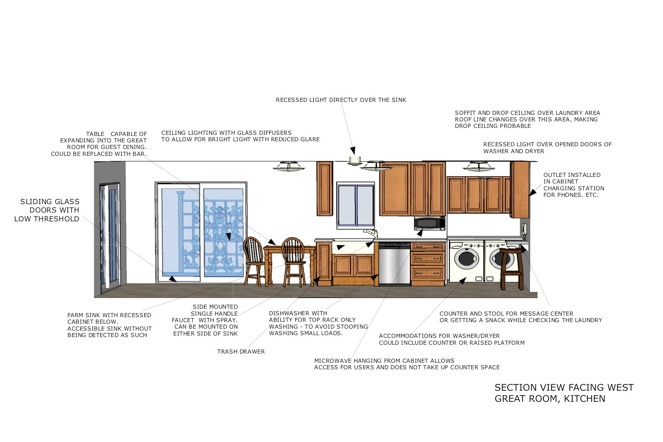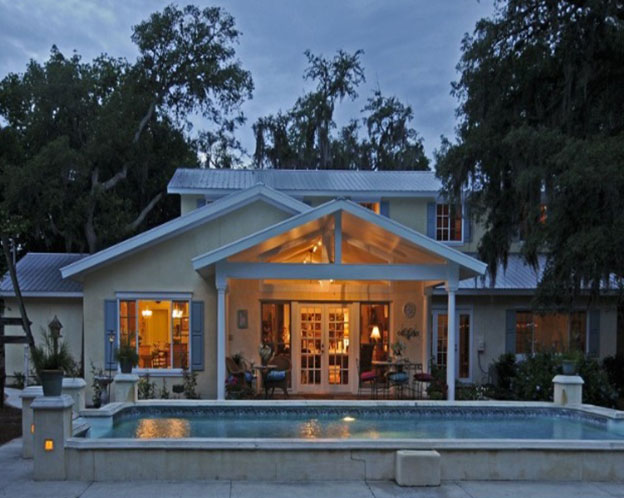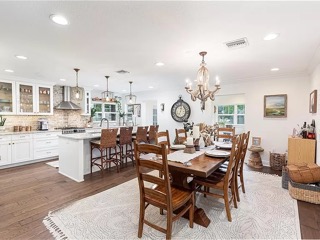All work by L.M. Gilbert, LLC.
Our Projects
Please click and view our past projects. All of the work you see has been completed by our team at L.M. Gilbert, LLC.
FIRST PLACE WINNER OF THE NAIPC 2011 UNIVERSAL DESIGN COMPETITION!
NAIPC NEWS
In this issue:
Bowl Game for Universal Design
Member Profile: The Perfect Plan
Public Policy: HSAs as Source of In-Home Care Funding
NAIPC News & Events

BOWL GAME FOR UNIVERSAL DESIGN
Central Florida Chapter Celebrates AIP Week with Competition
Remodeling and modifying an existing home to enable the residents to age in place instead of demolishing it and rebuilding was the determinant factor in the selection of a winner in the Central Florida Aging in Place Chapter’s 2011 Home Design competition, according to Doug Davis, chapter chair and outreach coordinator for Wellcare, Inc.
The winner of the design competition, in which local designers competed to come up with creative solutions for safe and independent living home modifications, was Lyn Gilbert, an Orlando area architect. Design contest judges, all of whom are CAPS certified, included an occupational therapist, a home builder/remodeler, and a local college instructor who teaches interior design. The winner was announced and gave a presentation at the fourth annual Aging in Place Educational Seminar and Aging in Place Expo held October 13 at the Home Builders Association of Metro Orlando in Maitland, Florida.
Submissions were based on a hypothetical couple living in a single-family, one-story home in Orlando. The hypothetical couple consisted of a husband and wife married for 45 years. The wife, 62 years old, suffers from type-II diabetes which significantly affected her lower extremities, requiring her right leg to be amputated above the right leg and forcing her to use a walker and a prosthetic. The wife’s 65-year-old husband, who suffers from arthritis in his shoulders, knees, and back, must assist her with daily activities, including bathing and helping her get in and out of the car.
They have lived in the home, appraised at $135,000, for 30 years. Property values in the neighborhood range from $130,000 to $200,000.
Although the house is real, contestants weren’t allowed to inspect the home and had to base their submissions on architectural plans, exterior photographs, and tax assessor maps indicating the size of the property. “It is somebody’s home and contestants couldn’t physically go there” as a result, Davis said.
Gilbert proposed modifying areas of the home that posed the greatest challenges and dangers to the residents, according to Davis. The main features of his proposal included making structural changes, including installing a ramp to the entry so the residents could safely get into the house, putting in easy turn faucets easily used by people with dexterity problems, grab bars that could double as towel racks, and lowering cabinets in the bathroom and kitchen so that they could be reached by someone in a wheelchair.
Additionally, Gilbert’s submission included installing a roll under sink in the bathroom and track and directional lighting in areas in which vision impaired individuals could trip or fall. Many of the changes involved the use of items that could be purchased at hardware stores or through special outlets and without a significant financial burden on the occupants.
In contrast, the second-place winner proposed demolishing and rebuilding the house instead of remodeling it. “We felt that a family who had lived in this home for a long time would have emotional ties to that home,” Davis said. “Second, financially, it didn’t make a lot of sense to tear down the home when houses in the current economy are being foreclosed on,” he noted, adding that the home’s occupants would have faced the expense of moving to an alternate dwelling during construction.
“The winner didn’t propose a tear down,” Davis said.
The design contest was a success in getting across the idea that homes can be built and modified for people to age in place, he noted. Although the chapter reached out to CAPS certified builders and designers, “any designer could submit plans and we basically allowed anyone to come in, look at the home, and make their own designs on what to do with it. We didn’t put cost parameters on entrants,” Davis said.





